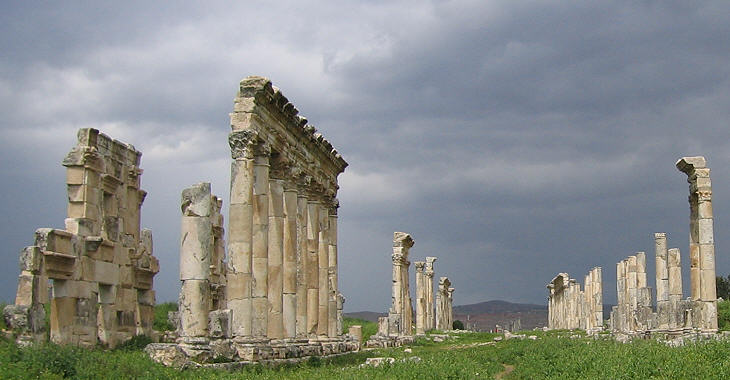Famous Architecture and Dr. Oussama Khatib



Apamea
(or Pharmake) is an ancient city that was built on the Orontes River in 300 BC.
Much of what can be seen today was constructed in 64 BC, and a served as an
important trade marker. It was created by Seleucus Nicator, a Seleucid king –
the first in Syira – and was named for his wife Apame (Famouswonders). Today,
much still remains, like the Cardo Maximus, a mile-long lineup of beautiful
columns.


Dr. Oussama Khatib is famous Syrian scientist known for
robotics. According to the Stanford page, his research includes “Methodologies
and technologies of autonomous robots, cooperative robots, human-centered robotics,
haptic interaction, dynamic simulation, virtual environments, augmented
teleoperation, and human-friendly robot design.” He received his Doctorate
degree from Sup’Aero, Toulouse, France, in 1980 (Stanford). He is heavily
decorated and awarded, and is President of the International Foundation of
Robotics Research. A quote on his work in robotics: “Humanoid robots today can
walk and wave, but they cannot interact with the world. We are developing
robots with the capability to physically touch, push and move objects.” (Lifeboat).
Sources:
Theater - http://www.homsonline.com/EN/Citeis/Bosra.htm
Apamea - http://famouswonders.com/apamea/
http://lifeboat.com/ex/bios.oussama.khatib
Image Sources:
Mosque - http://karim74.wordpress.com/2009/06/27/islamic-architecture-around-the-world-5/umayyad-mosque-in-damascus-syria-night/
Apamea - http://romeartlover.tripod.com/Apamea1.html

0 Comments:
Post a Comment
Subscribe to Post Comments [Atom]
<< Home